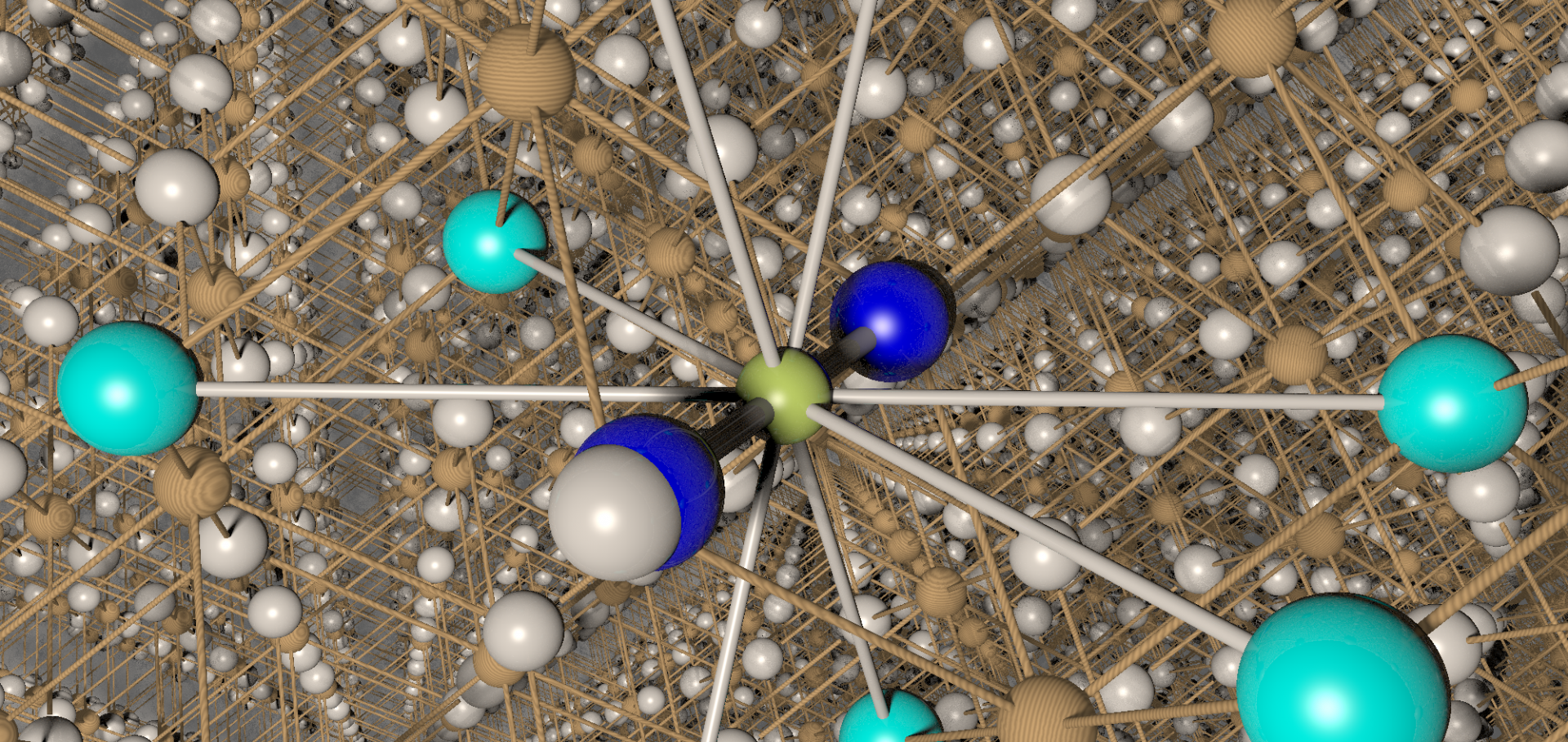A μ+SR study of the rare earth antiferromagnet PrO2
Journal of Physics Condensed Matter 15:49 (2003) 8407-8415
Abstract:
We present zero-field muon spin relaxation (μ+SR) measurements on the rare earth antiferromagnet PrO2. Oscillations in the time dependence of the muon polarization, characteristic of a quasistatic magnetic field at two distinct muon sites, are observed below TN, along with relaxation dominated by the magnitude of the local field. Candidate muon sites in the material are suggested on the strength of dipole field calculations. Relaxation above TN allows a prediction of the quasielastic neutron scattering linewidth, which is discussed in terms of a simple model of magnetoelastic relaxation involving a crystal field state at an energy Δ above the ground level. The obtained value of Δ may be taken as an approximate estimate of the splitting of the Γ8 ground state of Pr4+ in the distorted fluorite structure.Angle Dependent Magnetoresistance of the Layered Organic Superconductor \kappa-(ET)2Cu(NCS)2: Simulation and Experiment
(2003)
Magnetism in organic radical ion salts based on nitronyl nitroxide derivatives substituted with heterocyclic aromatic hydrocarbons
POLYHEDRON 22:14-17 (2003) 2343-2348
Abstract:
Radical cation and anion salts of the neutral organic radicals, 2-imidazolyl nitronyl nitroxide (2-IMNN) and 2-benzimidazolyl nitronyl nitroxide (2-BIMNN), have been prepared and their magnetic properties studied by SQUID magnetometry. The radical salts exhibit one-dimensional (1-d) antiferromagnetic (AFM) intermolecular interactions with the exchange coupling J/k between -0.8 and -6.3 K, which are significantly reduced from those observed in the two neutral radicals, while 2-IMNN shows an AFM interaction with J/k= -88 K within the molecular dimers and 2-BIMNN has quasi 1-d ferromagnetic (AFM) intermolecular interactions with J/k = +22 K (intrachain) and zJ'/k = +0.24 K (interchain). The magnetic properties of the nitronyl nitroxide and iminonitroxide derivatives having molecular structure related to 2-IMNN have also been investigated. In 2-benzimidazolyl iminonitroxide (2-BIMIN), the FM interaction observed in 2-BIMNN is replaced by strong 1-d AFM interaction with J/k = -11.7 K. (C) 2003 Elsevier Science Ltd. All rights reserved.mu SR studies of magnetic superconductors based on the BETS molecule
POLYHEDRON 22:14-17 (2003) 2307-2310
Abstract:
Muon spin rotation and relaxation measurements have been made on the molecular magnetic superconductors kappa-BETS2FeCl4 and kappa-BETS2FeBr4 and the non-magnetic molecular metals kappa-BETS2GaCl4 and lambda-BETS2GaCl4. In the magnetic materials, zero field muon spin relaxation signals show the formation of static antiferromagnetically ordered states and multiple precession frequencies are observed, corresponding to muon sites situated both within the anion layers and within the BETS layers. Studies of the relaxation behavior in the FeCl4 salt have previously shown significant changes around its superconducting transition and the FeBr4 salt reveals similar changes in the region of its superconducting transition, whose onset is around 1.5 K. In the non-magnetic GaCl4 salts the formation of a superconducting vortex lattice was observed and the penetration depth lambda was derived from the transverse field muon relaxation. When the BETS superconductors are compared with the ET-based superconductors that we have already studied using muSR, a striking correlation was observed between T-c and lambda(-3). (C) 2003 Elsevier Science Ltd. All rights reserved.mu SR studies of organic and molecular magnets
POLYHEDRON 22:14-17 (2003) 1973-1980


